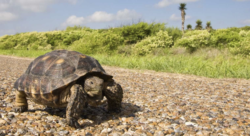Yoga-sized
For the past three years I’ve been dealing off and on with hamstring issues. One side would resolve and then the other would act up. It has resulted in fairly long stretches of having to rely on deep water running and StairMaster to stay in shape. During this time, I’ve been limited to 1,200 to 1,300 miles of running per year – not enough to be in top racing shape. At various times I’ve done PT, massage, and dry-needling to work through these bouts. Eventually, I’d get to the point where I can train and race but in time the hamstrings start talking. It’s getting old! My PTs regularly advised me tight hamstrings were a likely culprit though I’ve consistently stretched before and after runs and felt I was reasonably flexible, at least for a runner. I belong to the local Y and they have free 60-minute yoga classes for members. I’ve known of yoga for many years and had seen plenty of pictures of those deep into the practice, twisted like pretzels. I wasn’t interested. I just wanted to be flexible enough to run. But having noticed an increasing stiffness in my gait along with these hamstring issues, I figured I’d give yoga a try. The classes allow … Continue reading

